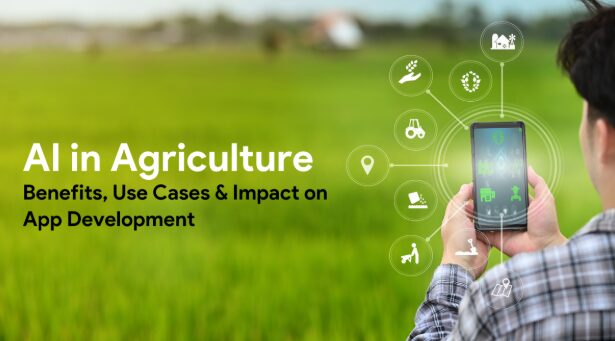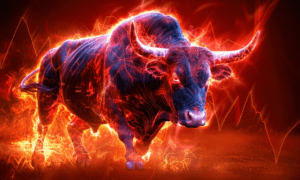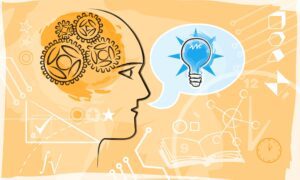With the scrambling demand for food, unpredictable weather patterns, and labor deficiencies, the requirement for intelligent software solutions has been magnified. AI in agriculture has proven to be a game-changer, permitting accuracy, efficiency, and sustainability in methods that were beyond imagination earlier. By enabling farmers to handle their regular tasks effectively, reducing wastage, and enhancing yields, artificial intelligence is leaving a powerful influence on the agriculture sector.
From AI-enabled drones that continuously monitor crop health to intelligent applications helping farmers make real-time and data-driven decisions, the fusion of AI in agriculture is redefining the industry.
Reaping the Rewards: Major Benefits of AI in Agriculture/Top Benefits of AI in Agriculture
As the world turns to smarter solutions for feeding a growing population, the benefits of AI in agriculture are becoming more apparent. Whether it is productivity or sustainability, AI is completely transforming the way we cultivate, inspect, and maintain crops. Below are the most impactful advantages driving this transformation:
1. Increased Crop Yields
AI-driven systems are able to monitor the soil conditions, weather reports, and plant health in real time and suggest optimal planting schedules and farming methods. The information will enable farmers to make wiser choices that can increase production. AI contributes to the lessening of harvest loss, as well as the most bio-productive use of fields, because it is constantly scouting the fields. This will create food security and better profitability in the long run.
2. Precision Farming and Resource Optimization
Through satellite imagery, drones, and IoT sensors, AI in agriculture enables precision farming by identifying the exact needs of different crop zones. The technology reduces the use of water, fertilizer, and pesticide because these resources are applied where necessary. The consequence is more effective use of resources, less burden on the environment, and healthier soil that will continue to grow.
3. Cost and Labor Savings
The necessary human activities, such as crop monitoring, spraying, and data analysis, are monotonous, which reduces dependence on manual labor through AI. The time and resources used by farmers are better distributed, and this translates into reduced operations. The degree of error is also reduced, and productivity is consistent, given that most of the work is done by AI-driven machinery, especially during the high seasons of farming.
4. Early Pest and Disease Detection
Using an AI model trained on using images to identify plant stresses, infestations, or diseases, the system can identify even early signs of plant stresses, pests, or diseases, even before visualization. This enables the farmers to take action quickly and fix operations with restricted treatments, avoiding significant losses. AI in agriculture plays a crucial role in maintaining crop health while reducing chemical usage.
5. Climate Resilience and Sustainability
Due to changing weather and high climatic conditions, global farming is a potential threat. It enables farmers to make proactive plans since AI assists in climate prediction and evaluation of environmental risks. Upon the advancement of adaptive techniques and a sustainable approach toward farming, AI facilitates the long-term sustainability of the agricultural industry and decreases the carbon footprint
Top Powerful Ways AI Is Used in Farming
With farms generating massive amounts of data daily, the real power of AI in agriculture lies in transforming this data into actionable insights. AI in its agricultural applications is smartening up the way farms operate and is transforming soil to sky. Examples of the most exciting real-world applications are given below:
1. Crop and Soil Monitoring
By deploying AI systems, it is possible to monitor the condition of the soil, the level of moisture, and its nutrients using satellite images and the data collected via sensors. This information can help farmers optimize the approaches to planting and soil treatment. The results of this proactive monitoring are more effective crop planning and long-term sustainability of the soil.
2. Precision Irrigation Systems
Smart irrigation solutions analyze the actual state of the environment (climate
conditions as well as soil moisture) using AI. That is to guarantee the distribution of water only where and when required. By conserving water, farmers also reduce energy consumption and overall irrigation costs, showcasing the efficiency of AI in agriculture.
3. Automated Tractors and Robotics
Artificial intelligence directing the activity of autonomous machinery allows
it to carry out such activities as ploughing, seeding, and harvesting with little
human intervention. These machines operate in real-time field situations and with the benefit of GPS, which helps them work with accuracy and maximize output, and reduce labor dependency. The use of this type of AI-powered machine also decreases the compaction of soil and provides equal field coverage.
4. AI-Powered Drones for Field Surveillance
Drones monitor crop health and spot irrigation issues and pest infestations (because they have AI as well as computer vision). Such overhead photographs help the farmers to make more timely and well-considered decisions and undertake certain actions before the issues spread. Such drones help in the survey of the extensive areas of farms in a very short time and in the most precise manner.
5. Predictive Analytics for Crop Planning
Through AI, past weather data, market trends, and farm records are analyzed as per the anticipation of the crop performance. Farmers can use these predictions to choose the most profitable crops, plan harvests, and reduce financial risks, making AI in agriculture a strategic planning tool. It promotes smart investments and increased response to unexpected climatic changes.
6. Weed Detection and Pesticide Control
This is because machine vision with AI identifies the weeds, and this enables
herbicides to be used accurately. Not only does this eliminate the use of chemicals, but it also avoids destroying crops. Reduced application of pesticides will comply with sustainability objectives and government regulations.
7. AI-Driven Supply Chain Forecasting
AI assists the agri-businesses and farmers in predicting demand, maximizing
storage capacity, and distribution. The aspect of predictive models lowers waste and ensures that goods are delivered on time by analyzing seasonal trends as well as consumer behaviors. This enhances farm-to-market coordination and maximizes overall profitability
Transforming the Future of Agriculture with AI Technology
With the introduction of digital transformation in the agricultural sector, mobile and web applications powered by AI are emerging as imperative to the world of contemporary farming. These apps harness the full potential of AI in agriculture, enabling farmers to make smarter, faster, and more sustainable decisions. That is the way artificial intelligence is becoming innovative in the creation of agricultural applications and the big characteristics that enable it. Businesses exploring this space can benefit greatly from partnering with experts in mobile app development services to build scalable and robust solutions.
1. Smart Farming Apps for Real-Time Insights
These applications also enable farmers to have field information at their fingertips so they can quickly change their actions when conditions change. They are also a base of operations of the farm, gathering, processing, and graphically presenting current agricultural data in real time.
Key Features:
- Interactive dashboards showing weather, crop, and soil metrics
- Push notifications for real-time alerts (e.g., drought risk, pest outbreaks)
- Satellite and drone data integration
- Offline access and data syncing for rural connectivity
2. AI Integration for Crop RecommendationsAI-backed crop intelligence helps farmers choose the most suitable crops to plant and handle based on local data. These systems estimate multiple aspects. It includes soil profile, historical yields, and weather forecasts to deliver practical insights.
Key Features:
- Personalized crop selection based on soil health, season, and region
- AI-driven yield forecasts
- Seed and fertilizer recommendation engines
- Local language support for accessibility
3. Weather Prediction APIs & Data Analysis
The idea of weather-aware farming becomes a reality because the AI makes sense
out of global and regional weather APIs. Through
the integration, farmers are in a position to reduce climate-related risks
since the disruptions can be anticipated long before they occur.
Key Features:
- Hourly and weekly weather forecasts with precision
- Rainfall probability, wind speed, and humidity tracking
- Pest/disease outbreak prediction based on weather patterns
- Alerts for extreme weather events
4. IoT & Sensor Data Fusion with AI
Using both IoT and AI, these apps provide a complex picture of field conditions that is better applied to on-the-ground decision-making. This combination builds an adaptable ecosystem in which the data produced by machines expands the understanding of humans
Key Features:
- Integration with soil moisture, pH, temperature, and nutrient sensors
- Smart irrigation system controls
- Visual heat maps of field performance
- AI-based crop stress detection
5. Challenges in Building Agri-Focused AI Apps
There are several technical and contextual issues that developers should take into consideration in case they want to create really effective agritech apps. If we talk about the security aspect, the critical balance between technological innovation and user-oriented design is critical towards the design of heterogeneous, yet scalable solutions. Engaging with skilled teams through trusted AI development services can help overcome such barriers.
Key Features:
- Poor rural internet infrastructure
- High deployment cost of AI to small farmers
- Localized datasets and training of AI models are needed
- Developing user-friendly UI/UX for low-tech users
Conclusion
The convergence of AI in agriculture is transforming how we produce, process, and distribute food throughout the globe. AI is revolutionizing the practice of agriculture directly at the origin because it can increase crop yields, build smart supply chains, and render farms climate resilient. With increasing agribusiness embracing smart technologies, working with an expert team to hire AI developers can provide customized, high-impact solutions that deliver real-world success. The future of the agricultural universe is digital, and AI is at its center.





























